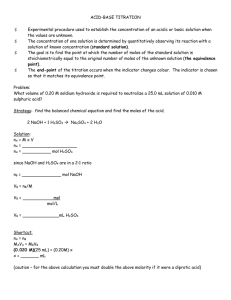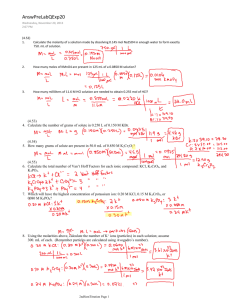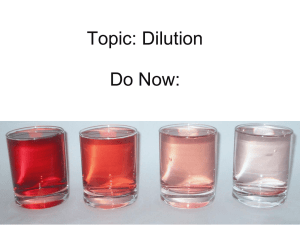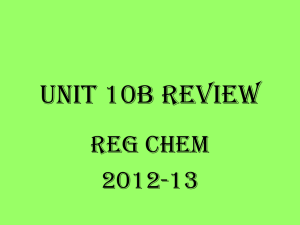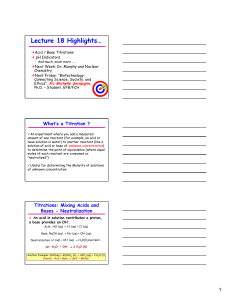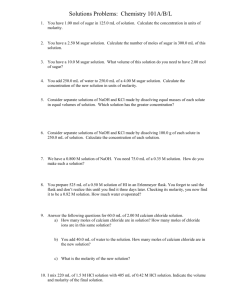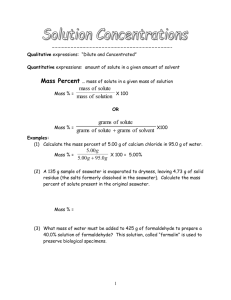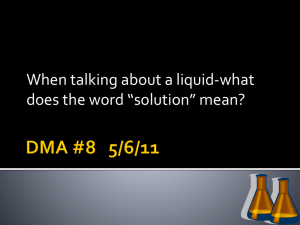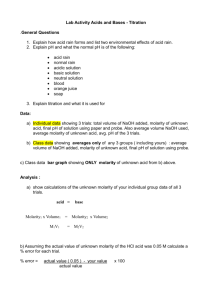Solution Concentration
advertisement
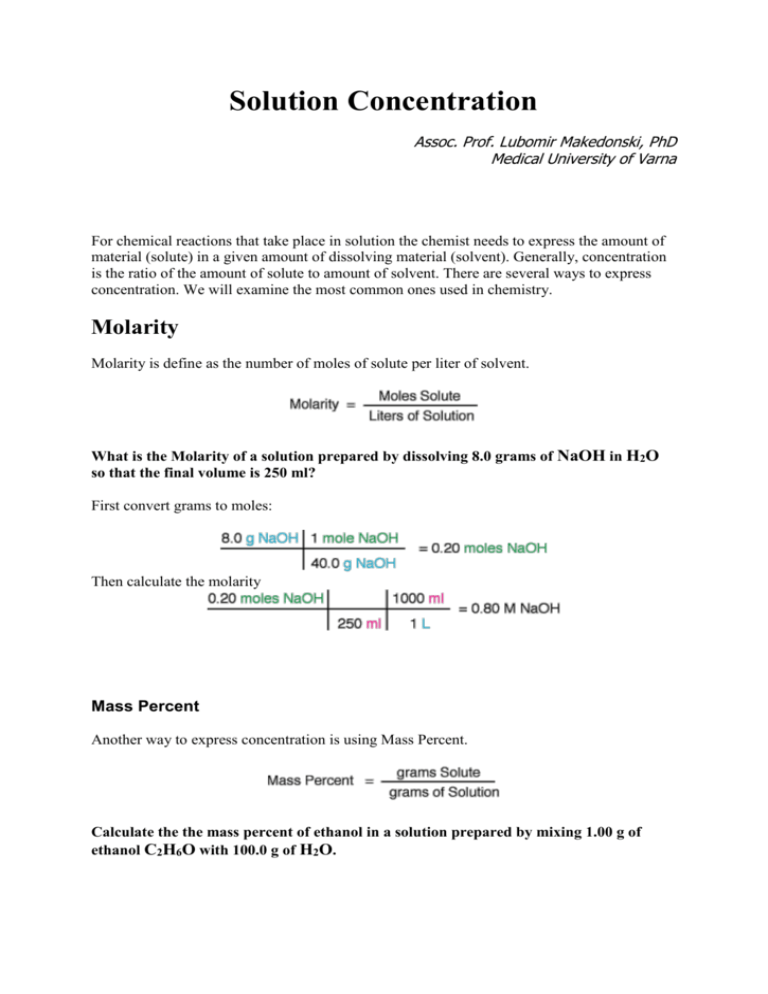
Solution Concentration Assoc. Prof. Lubomir Makedonski, PhD Medical University of Varna For chemical reactions that take place in solution the chemist needs to express the amount of material (solute) in a given amount of dissolving material (solvent). Generally, concentration is the ratio of the amount of solute to amount of solvent. There are several ways to express concentration. We will examine the most common ones used in chemistry. Molarity Molarity is define as the number of moles of solute per liter of solvent. What is the Molarity of a solution prepared by dissolving 8.0 grams of NaOH in H2O so that the final volume is 250 ml? First convert grams to moles: Then calculate the molarity Mass Percent Another way to express concentration is using Mass Percent. Calculate the the mass percent of ethanol in a solution prepared by mixing 1.00 g of ethanol C2H6O with 100.0 g of H2O. Dilution Often times solutions of a given concentration are prepared by diluting solutions of higher concentration. Here's an example of how to calculate how much a concentrated solution needs to be diluted to prepare a given concentration. How many milliliters of 16 M HNO3 must be used to prepare 1.0 liters of a 0.10 M HNO3 solution? So 6.2 ml of 16 M HNO3 diluted to 1 liter will give 0.10 M HNO3. Solution Stoichiometry Now let's use molarity in some stoichiometric calculations. Calculate the minimum amount (in liters) of a 0.050 M BaCl2 solution that is required to precipitate all the SO42-(aq) in 0.10 liter of a 0.10 M Na2SO4 solution. Ba2+(aq) + SO42-(aq) → BaSO4 In order to use the chemical equation we need to work in terms of moles. The concentration of SO42-(aq) is converted into moles by multiplying by the volume. Titrations A useful way to determine a solute's concentration in a solution is to react the solution with a solute in another solution of known concentration. This is known as a Titration. Titration: Experiment which determines the concentration of a solute (reactant) using its reaction of known stoichiometry with another solution (reactant) of known concentration. For example, if I have a solution of sulfuric acid, H2SO4 (aq), but don't know its concentration, then I can react it with a NaOH solution of known concentration. 2 NaOH(aq) + H2SO4 (aq) → Na2SO4 (aq) + 2 H2O(l) In a titration the titrant is added dropwise until the reaction is complete. Equivalence Point: Point at which stoichiometrically equivalent quantities are brought together. 40.0 mL of 0.20 M NaOH is needed to neutralize (reach equivalence point) for 20.0 mL of H2SO4 solution. What is the concentration of H2SO4 solution? 2 NaOH + H2SO4 → Na2SO4 + 2 H2O How do we know when the reaction is complete? We add a tiny amount of indicator to the analyte that will change color when the solution has excess titrant (e.g. excess OH ). For example, phenolphthalein molecules are colorless in neutral and acidic solutions, but are reddish purple in basic (i.e., excess OH ) solutions. Indicator: A material which (by changing colors or other means) signals that the equivalence point has been attained. End Point: When the indicator indicates that the equivalence point have been reached (e.g., changes color). Indicators need to be chosen carefully, so they don't change color too soon or too late.
